pocketgamer评2010年最具影响力的十大iOS游戏
就在不少游戏玩家、业内评论家还在为2010年最具影响力的手机游戏评选而争论不休时,pocketgamer网站发布了自己筛选出的一份名单,这些游戏并一定在玩法设置、用户规模或游戏体验上有什么过人之处,深刻推动iOS游戏的发展趋势,才是它们的上榜理由。
1.《愤怒的小鸟》及其节日版本(Angry Birds/Seasons,Rovio/Chillingo作品)
目前这款游戏的跨平台下载量(包括iOS、Android和Ovi平台)已经突破了5000万次,可以说Rovio公司真是创造了一个手机游戏领域的奇迹。
这款游戏在2009年底投放App Store,在2010年狂受热捧,甚至形成了一个“愤怒鸟现象”。
游戏邦认为,开发商对用户反馈的重视,定期推出的更新版本、99美分的价格、内容丰富多彩的关卡设置等内容,都是它得以载入手机游戏发展史的重要原因。
2.《Infinity Blade》(Chair Entertainment/Epic Games作品)
这款游戏充分证明,掌握Unreal Engine 3等大量掌机游戏开发资源的开发商一旦进军iOS市场,出手一定不同凡响。
Chair Entertainment为这款游戏创造了可控制玩家摄像机位的硬件,最大限度地呈现了完美的游戏画面效果。虽然风格与《Rage》类似,但它鼓励用户采用丰富的游戏动作,并将游戏设置、定位系统、敌人等要素完整融合在一起,构成了一个史诗般的游戏剧情。
它的定价也很不同寻常,零售价是5.99美元,低于不少开发商的预期,却正好遂了许多玩家的心愿,现在已经成为App Store最快销售、最快实现100万美元营收的游戏。
据游戏邦所知,Epic Games副总裁马克·莱茵(Mark Rein)还曾经表示,不会让游戏降价促销,但会通过增加新功能、道具这种“加量不加价”策略,让用户从升级版本中得到更大的实惠。另外,该游戏的第一个升级版本还含有内置付费功能。
3.《We Rule》(Newtoy/ngmoco作品)
尽管ngmoco公司在2009年夏天就宣布出击免费模式游戏市场,但一直到2010年2月才发行了第一款这种类型的作品《We Rule》。该游戏是App Store中最先采用免费模式的社交游戏之一,因为本身设计讨人喜欢,加上当时市场竞争还不这么激烈,《We Rule》一登台就赚了不少眼球,不过传统的硬核游戏玩家对它就没啥兴趣了。
但因为这款游戏太有黏性了,许多玩家连续投入大量时间闯关,抢购游戏道具,导致ngmoco一度因为社交游戏平台Plus+的服务器问题而抓狂了好几个月。
经过一轮轮的漏洞修复、发布新道具、推出新关卡,优化游戏设置之后,ngmoco最后总算解决了Plus+平台的问题,并干脆从Newtoy工作室手中接过了该游戏的开发升级工作。据称ngmoco还将《We Rule》撤下了App Store的货架,让重新改良的《We Rule Quests》取而代之。
该游戏的同一系列作品还包括《We City》、《We Farm》、《We Farm Safari》等,它们的成功让ngmoco找到了好归宿——以4.03亿美元售价找到了实力强大的靠山、日本DeNA公司。
4.《糖果小怪物》(Cut the Rope,Zeptolab/Chillingo作品)
这确实是2010年最值得回顾的iOS游戏之一,也曾经是App Store销售最快的游戏,它的成功很大程度上有赖于发行商Chillingo的支持。
因为与《愤怒的小鸟》(Angry Birds)合作终止,后来又以2900万美元被EA Mobile收购,Chillingo能否再次创造手机游戏神话受到了业内的高度关注,《糖果小怪物》的一战成名,打消了外人的疑虑。
据游戏邦了解,这款游戏的开发商Zeptolab在2010年的第一款iPhone游戏是《降落伞忍者》(Parachute Ninja),尽管用户评论还不错,却没有收获实际的商业利益。这也再度表明,Chillingo的发行渠道和优化建议,是这款游戏从App Store中脱颖而出的最关键因素。
5.《Gun Bros.》(Glu Mobile作品)
毫无疑问,《Gun Bros.》这款免费模式的手机游戏多少挽回了Glu Mobile的颓势(至少从短期来看,情况确实如此)。
当Niccolo De Masi在2010年初担任Glu Mobile公司CEO一职时,很多人怀疑这家公司最终会委身其他买主,要不然就是破产。但Niccolo De Masi经过大刀阔斧地改革,将免费模式作为业务发展重点,并推出了《Gun Bros.》。该游戏目前下载量已达300万次,每日用户为17万2千人,经常出现在综合游戏排行榜的前列。
更值得一提的是,《Gun Bros.》还证明免费模式也可以不走寻常路,并非一定要采用像《FarmVille》那种带休闲风格,同时又没完没了的付费玩法设置。这款游戏的个性化设计、社交合作功能选项,以及极为出色的射击技巧,使它成为最吸引硬核玩家的手机游戏之一。
6.《僵尸农场》(Zombie Farm)
可以说2010年是免费模式手机游戏市场大为膨胀的一年,《僵尸农场》这款由单人游戏工作室The PlayFore的文斯·麦克唐纳(Vince McDonnell)独立开发的游戏,居然能在《FarmVille》、《We Rule》等作品的围攻下,闯入苹果2010年iPhone综合游戏前十强,实在不能不令人称奇。
这款游戏沿袭了Facebook休闲游戏的玩法设置,并从《植物大战僵尸》中获得了一些灵感,它的成功可是说是天时地利的结果,目前下载量已超过700万次,每月活跃用户约200万人。
7.《蓝精灵村庄》(Smurfs’ Village,Capcom作品)
遭遇双重打击的Capcom在将近年底的时候总算有了意外之举,推出了一个吸金工具——免费模式的《蓝精灵村庄》。
这款游戏自11月发行以来,一直稳居美国综合手机游戏前10强行列。它也是首款锁定儿童市场的免费模式iOS游戏,不过也因为付费系统设置问题让不少家长大为光火——如果用户15分钟后还没有输入交易密码,系统就会默认用户已同意购买该游戏。许多孩子为了购买Smurfberries,在不知情中落入了这个收费圈套,最后受害的总是家长手中的信用卡。
但不管怎么说,它能够在一年中最激烈的市场竞争中长盛不衰,已足以说明Capcom还是摸着了游戏玩法和社交功能设置的门道,迪士尼只能看着眼红了。
8.《Rage》(id Software作品)
若不是竞争对手Epic开发的《Infinity Blade》重磅出击市场,id Software工作室推出的《Rage》恐怕已经摘走年度最佳iPhone游戏画面的桂冠。
这款游戏的掌机同名版本也即将登场,它有不少可圈可点的地方,发布了两种版本:537MB/99美分(普通标准版)、746MB/1.99美元(iPad、iPhone 4高清版)。
先不论技术标准如何,游戏设计方案是它备受关注的原因之一,但也有不少评论家给它打了低分。这有可能是因为它的商业运营失利所致,名次攀升得越高,下跌也就越快。总之从许多方面来看,《Rage》很可能是2010年最令人失望的iPhone游戏之一。
9.《涂鸦跳跃》(Doodle Jump,Lima Sky/GameHouse作品)
看到这里,可能有不少人会想,这根本就是一款2009年的游戏,怎么还有入围。但游戏邦要说明的是,这款游戏在这一年中已升级了15次,还推出了一个圣诞节版本,并通过GameHouse的发行渠道,在Android、Ovi手机平台扩大了市场影响力。
《涂鸦跳跃》和《愤怒的小鸟》(Angry Birds)一样具有向其他智能手机平台扩张的市场潜力,它同时也证明一个出色的创意、广受欢迎的更新版本,完全可以成就一项更大的事业。
尽管市场竞争激烈,而且面临多个山寨游戏的挑战,原创版的《涂鸦跳跃》在2010年仍然稳居美国iPhone游戏前20强榜单,而且大部分时间是排在前十名,所以它能成为苹果2010年的顶级付费应用、综合应用之一,这一点也不让人意外。
10.《劳拉与光明守护者》(Lara Croft and the Guardian of Light,Square Enix作品)
虽然Square Enix向这款原Xbox Live游戏植入了一个很出色的本地合作码,但它在iPhone、iPad平台上的运行效果其实很一般。不过,《劳拉与光明守护者》iOS版本的问世,也已足以反衬其他运营不利的掌机游戏发行商的失败。
但苹果App Store在圣诞前的大规模促销活动,却凸显这款游戏在公关、市场营销上鲜有作为的窘境。当然,自力更生,以实力取胜也是这类电子游戏在发行过程中的普遍立场。
只是在《Real Racing 2》、《Shadow Guardian》、《N.O.V.A. 2》、《Battlefield: Bad Company 2》、《Ultimate Mortal Kombat 3》、《Broken Sword》、《Aralon: Sword and Shadow 》等优质游戏扎堆出炉的情况下,《劳拉与光明守护者》不出所料地陷入了沉寂,用户反应一般,甚至还被挤出了美国手机游戏100强榜单。(本文为游戏邦/gamerboom.com编译,转载请注明来源:游戏邦)
The 10 most significant iOS games of 2010
1. Angry Birds/Seasons
Rovio/Chillingo
Despite being released onto the App Store in the tailend of 2009, Rovio’s Angry Birds was far and away the iOS gaming phenomenon of the year. Indeed, such was its crossover cultural appeal, you could argue it was the gaming phenomenon of 2010.
Throw in an HD iPad release, the iPhone and HD release of the Halloween game that became Angry Birds Seasons at Christmas, and a total download of more than 50 million (including Android and Ovi) during the year, and there’s no doubt Rovio’s humorous reimagining of Crush The Castle has demonstrated the massive breakout potential of mobile.
Significantly though it was the developer’s commitment to listen to fan feedback, offer regular and substantial updates, as well as the original game’s 99c pricepoint, and the attention to detail that ranged from solid physics to colourful levels and great touches such as the mocking laughter of the pigs, that combined to create what seems likely to go down in history as the most significant game to be launched on mobile.
2. Infinity Blade
Chair Entertainment/Epic Games
Sprung as a surprise during Apple’s September press conference, Infinity Blade (nee Project Sword), demonstrated what could be done when console technology such as Unreal Engine 3 and the resources, skill and mindset of a console developer were brought to bear on the most advanced iOS devices.
As with id Software’s similar Rage project, Chair Entertainment made the most of the available hardware by controlling the player’s camera, ensuring it could get the biggest graphical bang possible. Unlike Rage however, Infinity Blade didn’t annoy its audience by restricting their actions, instead making the most of its reuse of gameplay, locations and enemies by integrating them within a looping, heroic plot.
The game’s pricing strategy was also radically different, with the universal app sold at $5.99/£3.49. Not as much as some developers hoped, but less than many gamers expected, it proved to be a sweetspot in terms of top grossing chart performance, being the fiastest game to gross $1 million.
Epic’s Mark Rein also underlined his App Store philosophy pointing out that the game’s price wouldn’t be cut. Instead additional features and objects would be added via updates. And, cleverly, the first also included in-app purchases.
3. We Rule
Newtoy/ngmoco
Despite ngmoco deciding it was going free-to-play in summer 2009, it wasn’t until February 2010 that it released its first dedicated from-the-ground-up title. We Rule was one of the first social freemium games available on the App Store, and thanks to the then lack of competition and its cute, polished presentation was an immediate success, even if it didn’t appeal to the hardcore audience.
Yet it took several months for ngmoco to overcome serious server issues relating to its Plus+ social gaming infrastructure; something key both in terms of the game’s stickiness, and the items and levels players were spending their time and money gaining.
Working on a iterative cycle of bug fixes and releasing new items, levels and gameplay, ngmoco eventually solved its network problems, and took the game’s ongoing development inhouse from launch studio Newtoy. Indeed, in time it decided to remove We Rule from the App Store entirely, replacing it with reworked We Rule Quests.
The series also expanded with the We City, We Farm and We Farm Safari releases, but the final proof of its success came with DeNA’s $403 million purchase of ngmoco in October.
4. Cut the Rope
Zeptolab/Chillingo
While there’s no question Cut the Rope was one of the best reviewed iOS games of 2010 – as well as being one of the fastest selling – certainly the fastest to three million paid downloads – its significance from a business point of view concerned its publisher Chillingo.
With a reputation buoyed by its on-off relationship with Angry Birds and its developer Rovio, the question of whether lightning could strike twice following its $29 million purchase by EA Mobile was answered effectively by Cut the Rope’s immediate success.
Indeed, in this context, it’s relevant to note Zeptolab’s first iPhone game of 2010 Parachute Ninja, while also reviewing well, failed to make any commercial impact. This further underlines Chillingo’s ability to fulfill the potential of select titles that otherwise might not standout from the huddled App Store masses.
5. Gun Bros.
Glu Mobile
Its significance for the wider games industry needs to be picked apart, but there’s no doubt that the success of this topdown freemium shooter saved publisher Glu Mobile, at least in the short term.
For when Niccolo De Masi joined as CEO at the start of 2010, it was assumed the failing company would be bought or go bust. Instead, he refinanced, making freemium games its new focus, with Gun Bros. the first proper release in that direction. The iPhone game has since been downloaded around 3 million times, has 175,000 daily users and is regularly found in the top grossing charts.
More widely however, it’s demonstrated that freemium games don’t have to follow the casual but commercial grinding gameplay popularised by the likes of FarmVille. Thanks to its customisation and social co-op options, and its sheer gunplay, Gun Bros. is one game in which hardcore players will clock up the minutes daily.
6. Zombie Farm
The PlayForge
In a year that’s seen an explosion in successful mobile freemium games, it’s surprising that despite the headlines gained by the likes of FarmVille and We Rule, Zombie Farm – from Vince McDonnell’s solo startup The PlayForge – was the only such title to be listed in Apple’s 2010 top 10 list of the highest grossing iPhone games.
Of course, it helped that it followed the well trodden gameplay and monetisation conventions of the Facebook casual sector. It also managed to take momentum from the zombie meme before weight of numbers finally demonstrated that even the undead can expire, creatively and commerically at least.
The result of the serendipitous right place, right time, Zombie Farm was over seven million downloads and around two million monthly active users.
7. Smurfs’ Village
Capcom
In a double whammy, Capcom surprised us, not only ending the year by releasing freemium games but realising the rarely exciting and European-centric Smurf licence was, in fact, a licence to print money.
Solidly floating in the US game top grossing top 10 chart since its November release, Smurfs’ Village was the first free-to-play iOS game to unlock the kids’ market, albeit it with some controversy concerning the propensity of adults not to understand Apple’s default system for in-app purchases – a 15 minutes grace period after your iTunes’ password is entered – as well as the enthusiasm of children for Smurfberries, little realising the impact on their parents’ credit cards.
Still, the game’s chart longevity in the most competitive months of the year demonstrates that Capcom has managed to combine the licence with highly accessible gameplay and social features. Disney must be spitting feathers.
8. Rage
id Software
Before Epic revolutionised the market with Infinity Blade, it seemed that rival first person shooter studio id Software would take the crown for the year’s most impressive iPhone graphics.
Based on its forthcoming console game of the same name, Rage was significant for several reasons. The universal app was released in two versions; a standard resolution 537 MB version at 99c/59p, and a 746 MB HD version for iPad and iPhone 4 priced $1.99/£1.19.
If nothing else, it was the year’s biggest extreme between price and file download size.
Technical specifications aside however, it was the design decision to make Rage a high score on-rails shooter that really divided opinions, with most reviewers marking the game down. This was reflected by its relative commercial failure, as it charted high only to decline. In many ways, Rage was the most disappointing iPhone game of 2010.
9. Doodle Jump
Lima Sky/GameHouse
Hold on, you may be thinking. Doodle Jump was a 2009 game. Hold on yourself, I retort. As well as gaining 15 updates and a standalone Christmas release on iPhone in the past 12 months, thanks to developer Lima Sky’s publishing deal with GameHouse, the game was also ported to Android, Ovi and mobile.
In this regard, alongside Angry Birds, Doodle Jump demonstrates the breakout potential of iPhone games into the wider smartphone market. No doubt, it will break out into other entertainment platforms too, proving that one great idea, constantly loved, nurtured and updated, can be turned into a substantial enterprise.
And if further proof was required, despite the competition and clones, the original concept still works. Doodle Jump remained in the US top 20 iPhone game chart for the whole of 2010, being in the top 10 for the majority of that time. Small wonder it was listed as one of Apple’s top paid and top grossing games of the year.
10. Lara Croft and the Guardian of Light
Square Enix
The conversion of this Xbox Live game for iPhone and iPad was in-and-of itself fairly unremarkably, although Square Enix’s inclusion of a local co-op mode was impressive. Instead, the significance of Lara Croft’s iOS debut was that it demonstrated the complete failure of some console publishers to understand the ecosystem.
With the App Store already saturated with pre-Christmas releases and a huge number of sales, The Guardian of Light suddenly appeared without any PR or marketing support.
Of course, to some degree, the power of licences in the context of digital distribution is that they generate their own hype.
However with the likes of Real Racing 2, Shadow Guardian, N.O.V.A. 2, Battlefield: Bad Company 2, Ultimate Mortal Kombat 3, Broken Sword, and Aralon: Sword and Shadow released at the same time, and anticipated by the press and gaming audience alike, there was little surprise that Lara Croft and the Guardian of Light wasn’t reviewed widely, charted outside the US top 100, and quickly slipped into obscurity.(source:pocketgamer)

























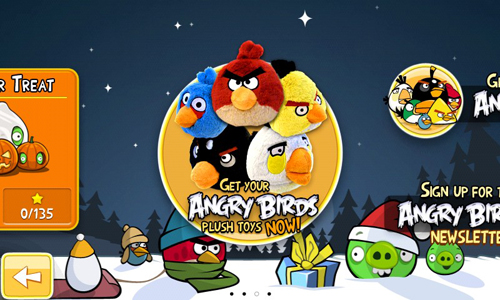

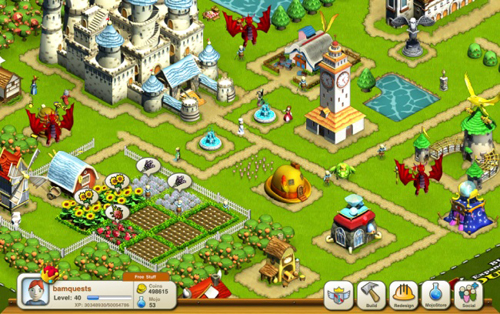
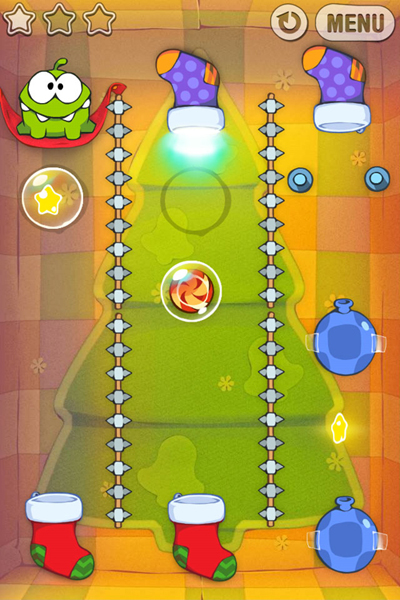
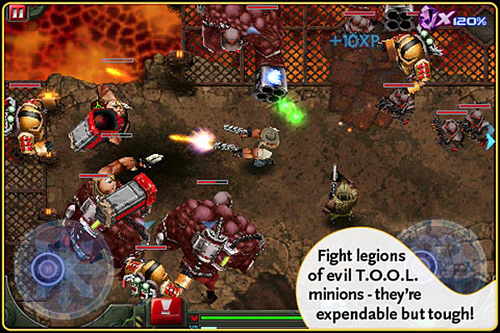
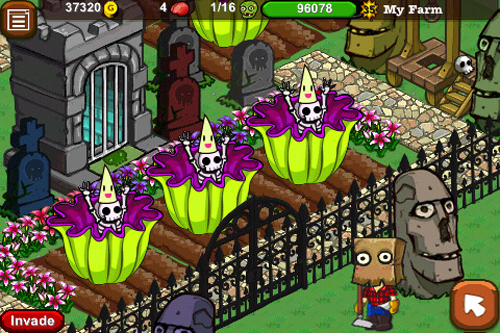

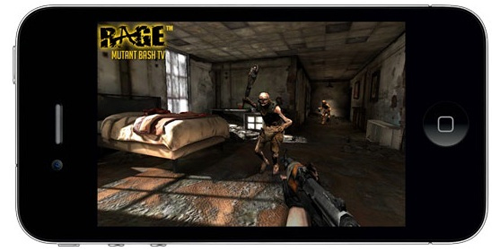
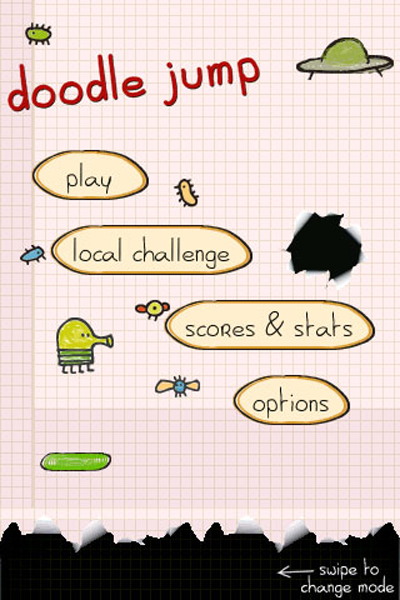
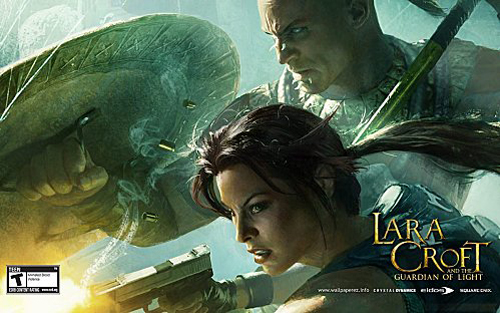














 闽公网安备35020302001549号
闽公网安备35020302001549号